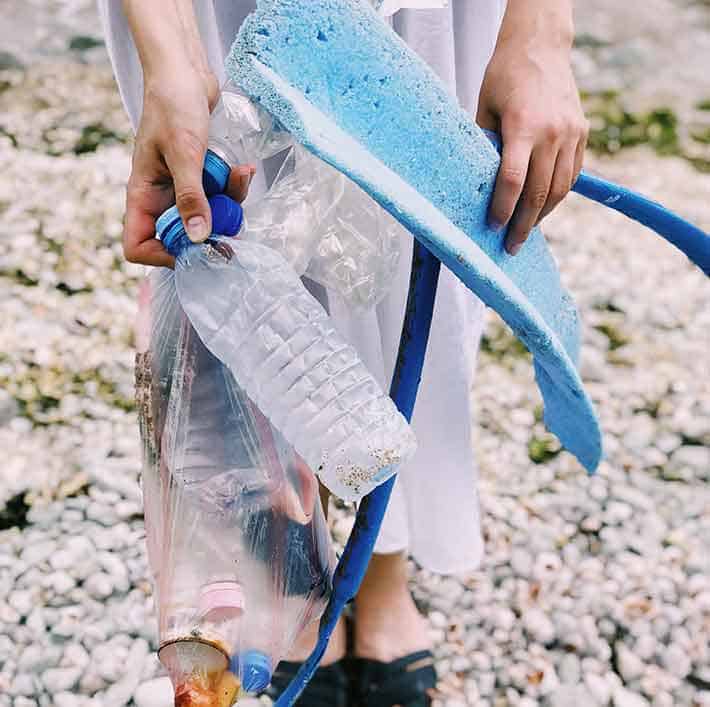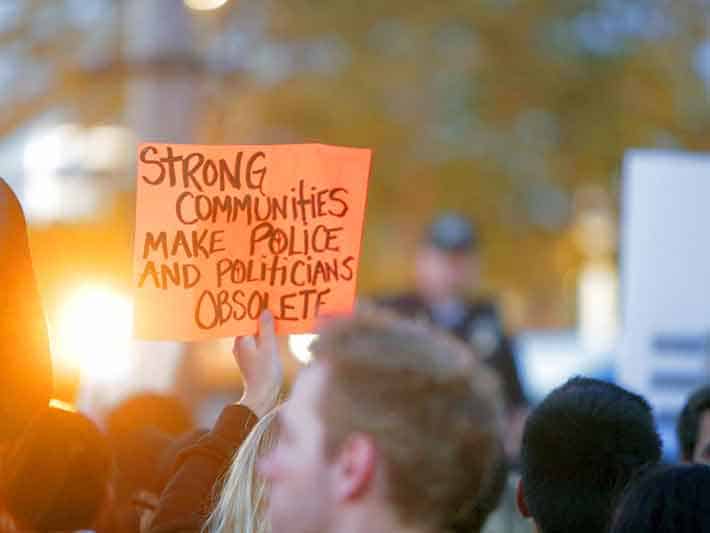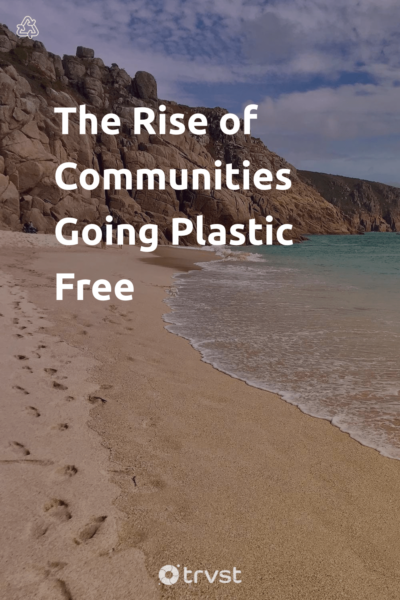The Rise of Communities Going Plastic Free
Our entire environment is facing a number of significant challenges. While greenhouse gases and climate change get a lot of attention, plastic waste is a hot topic too. With growing awareness and a growing consumer backlash to single-use plastic, we’re starting to see whole communities going plastic-free.
From the murky depths of our oceans to our countryside, plastic waste is working its way into every corner of our environment2. Today, the many problems plastic pollution causes have gained international recognition which can only be a good thing5.
As a result, people are coming together to do their bit, mobilizing and making changes where they live. Doing so shows those whole communities can in fact go plastic-free.
There is no doubt that a ‘strength-in-numbers’ approach to dealing with plastic is a step in the right direction1. What’s more, the early pioneers setting the example will help to encourage changing behaviors and reduce waste at the same time.
The Role of Communities in the Fight Against Plastic Pollution

Whether it is a beach clean initiative, campaigns such as surfers against sewage, or community leaders making a stance, we can all do our bit to reduce the amount of plastic we use.
Of course, many people are already playing their part across the world. However, these groups are in the minority and this is where communities have a greater role to play. It is important that we move beyond the beach clean-ups and individuals doing their bit and look to prevent plastic pollution in the first place3.
As more people become engaged in the problem and act together towards a solution, together we can more widely distribute the required changes to reduce our demand for plastic.
Involving Community Stakeholders
To accelerate our progress in reducing plastic pollution we should aim to involve as many community stakeholders as possible. Therefore, we need to get our local government on board.
We need to encourage and enable plastic-free schools, in turn, educating the next generation about less wasteful behaviors. Engaging local businesses to reduce plastic waste, looping in clubs and other networks all play a role in shifting whole communities to plastic-free.
Communities are not just about individuals or families. There are local retailers that could underpin the success of a plastic-free community. They could be the driving force behind making a change because if they reduce or remove the ability to purchase and use plastic, then customers will need to seek out alternatives.
Strength in Numbers
If we can come together as a community, we can defeat plastic pollution at a local level.
The reality is that a group mentality when it comes to achieving a plastic-free community status is vital. If communities can put their heads together and share ideas, they can come up with ways of reducing the use of avoidable single-use plastic.
Supporting Action
All the same, the truth is that local communities need support. They can play a huge role but they need policies that support them. The government should ban non-essential plastic packaging not work towards removing avoidable plastic waste as per the 25-year environmental plan that the UK government has in place.
There is so much that can be done, and examples of best practice and success could be more widely distributed. For example, local councils could set up special plastic bottle deposit schemes and they could even introduce and enforce penalties for those who dispose of plastic incorrectly.
Changing attitudes and giving communities the power they need to go plastic-free is vital. Schemes can help to bring communities together and when communities come together, they can champion worldwide change for the better with a shared voice.
Perhaps the way to become plastic-free is to think about small changes. If we can encourage communities to implement small changes, then collectively they can become the bigger change required.
How to Become a Plastic-Free Community
If a community is to become plastic-free then it typically starts with a proactive individual taking the initiative to lead the change. Therefore, someone within the community has to volunteer as a plastic-free community leader.
Once they make this step, there is a lot of support out there. Surfers Against Sewage provides community toolkits that help individuals to create a plastic-free community. This involves the setup of a steering group. It also involves getting local businesses and organizations on board too. Once people get on board, community action can gather momentum and begin to progress the required changes4.
As it currently stands, there are 660 communities in the UK that have signed up to Surfers Against Sewage. However, thus far only 49 have become certified as plastic-free, with the others no doubt making strides in the right direction.
Communities That Have Become Plastic-Free
In Penzance, a local resident took it upon herself to join SAS. From here she made it her mission to help Penzance gain a plastic-free status. After many months of hard work, Penzance became the first plastic-free town in the UK.
Penzance set the example, and now more and more communities are joining in the movement. While many of the communities are coastal, there are some situated inland
Chepstow is another community that has achieved a plastic-free status. This was the first town in South Wales to be awarded the status. However, Caerphilly soon joined them while Aberporth, New Quay, and Aberystwyth are also plastic-free communities in West Wales.
The plastic-free status is not only confined to the UK as it has also stretched to Canada. Bayfield, a community located on the edge of the great lakes has also achieved a plastic-free status.
The community in Bayfield also had to meet specific criteria. The mission to become plastic-free was spurred on by the alarming fact that the great lakes contain more plastic by volume than the oceans.
So, there are signs that more and more people are rallying behind the plastic-free cause. Communities are coming together to rid our lives of single-use plastic and it is beginning to gather traction on a global level.

What Next?
As with all significant changes, things take time. The real challenge we face is getting more people on board.
When we consider our reliance on plastic as well as its convenience, trying to convince people to stop using plastic is where the problem lies.
As smaller communities play their part, they will become bigger communities once neighboring towns and cities get involved. The hope is that over time, the change will be large enough to include all communities. Single-use plastic is a serious problem and if we are to deal with it, we need to take a collective approach to find a solution.
| 1 | Farhana Khan, Waqar Ahmed, Arsalan Najmi, Understanding consumers’ behavior intentions towards dealing with the plastic waste: Perspective of a developing country, Resources, Conservation and Recycling, Volume 142, 2019, Pages 49-58, ISSN 0921-3449, https://doi.org/10.1016/j.resconrec.2018.11.020 |
| 2 | Eriksen M, Lebreton LCM, Carson HS, Thiel M, Moore CJ, Borerro JC, et al. (2014) Plastic Pollution in the World's Oceans: More than 5 Trillion Plastic Pieces Weighing over 250,000 Tons Afloat at Sea. PLoS ONE 9(12): e111913. https://doi.org/10.1371/journal.pone.0111913 |
| 3 | Wyles, K. J., Pahl, S., Holland, M., & Thompson, R. C. (2017). Can Beach Cleans Do More Than Clean-Up Litter? Comparing Beach Cleans to Other Coastal Activities. Environment and Behavior, 49(5), 509–535. https://doi.org/10.1177/0013916516649412 |
| 4 | Fostering Responsible Communities: A Community Social Marketing Approach to Sustainable Living. Carrigan, M., Moraes, C. & Leek, S. J Bus Ethics (2011) 100: 515. https://doi.org/10.1007/s10551-010-0694-8 |
| 5 | Windsor, FM, Durance, I, Horton, AA, Thompson, RC, Tyler, CR, Ormerod, SJ. A catchment‐scale perspective of plastic pollution. Glob Change Biol. 2019; 25: 1207– 1221. https://doi.org/10.1111/gcb.14572 |
Jen’s a passionate environmentalist and sustainability expert. With a science degree from Babcock University Jen loves applying her research skills to craft editorial that connects with our global changemaker and readership audiences centered around topics including zero waste, sustainability, climate change, and biodiversity.
Elsewhere Jen’s interests include the role that future technology and data have in helping us solve some of the planet’s biggest challenges.

